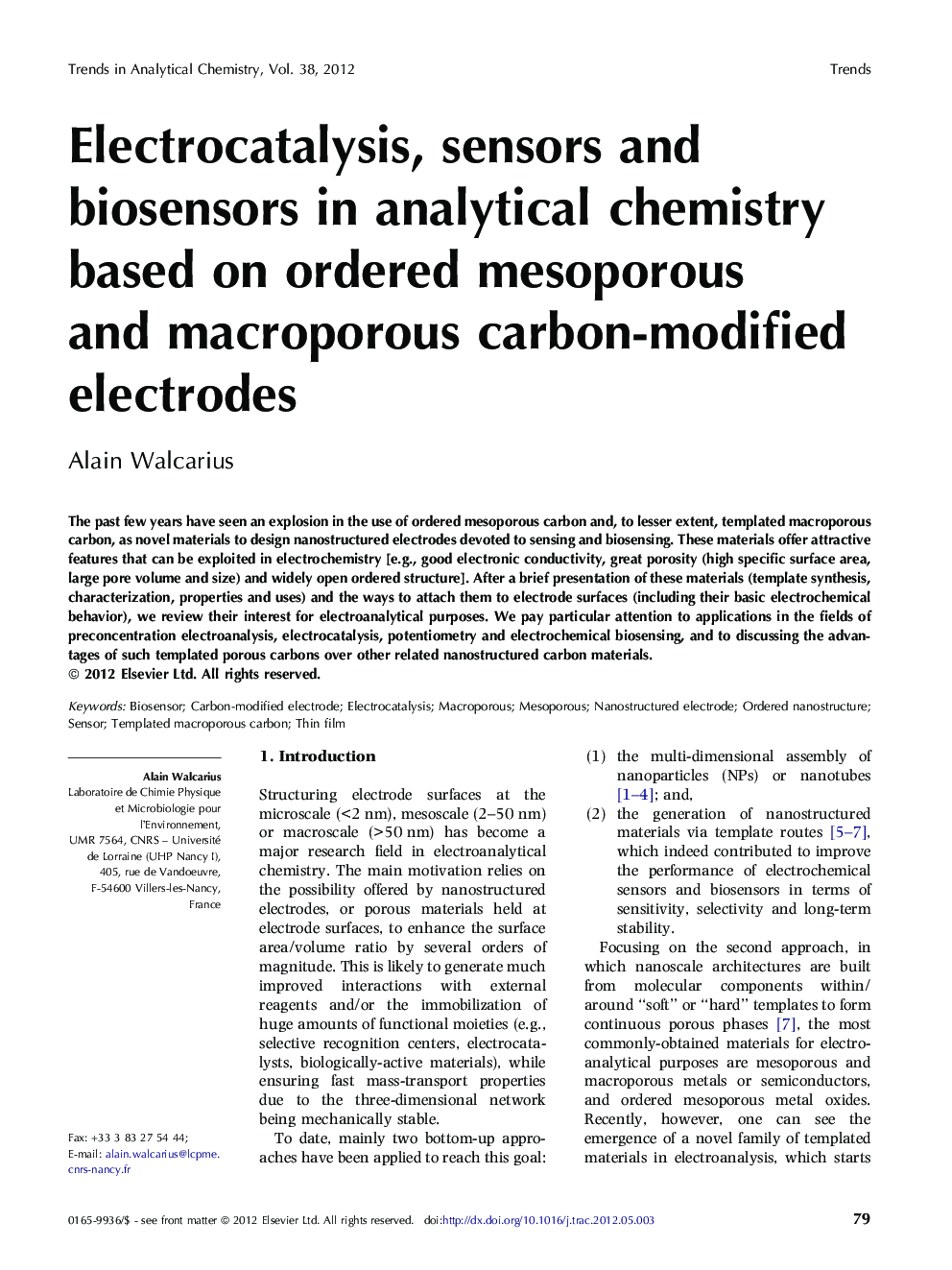| Article ID | Journal | Published Year | Pages | File Type |
|---|---|---|---|---|
| 1249213 | TrAC Trends in Analytical Chemistry | 2012 | 19 Pages |
The past few years have seen an explosion in the use of ordered mesoporous carbon and, to lesser extent, templated macroporous carbon, as novel materials to design nanostructured electrodes devoted to sensing and biosensing. These materials offer attractive features that can be exploited in electrochemistry [e.g., good electronic conductivity, great porosity (high specific surface area, large pore volume and size) and widely open ordered structure]. After a brief presentation of these materials (template synthesis, characterization, properties and uses) and the ways to attach them to electrode surfaces (including their basic electrochemical behavior), we review their interest for electroanalytical purposes. We pay particular attention to applications in the fields of preconcentration electroanalysis, electrocatalysis, potentiometry and electrochemical biosensing, and to discussing the advantages of such templated porous carbons over other related nanostructured carbon materials.
► Templated macro- and mesoporous carbon materials are attractive for electrochemistry. ► They offer good conductivity, great porosity, and widely open regular structure. ► They exhibit intrinsic adsorption and electrocatalytic properties. ► They have applications in chemical sensors and electrochemical biosensors. ► Possible advantages over related nanostructured carbons are discussed.
